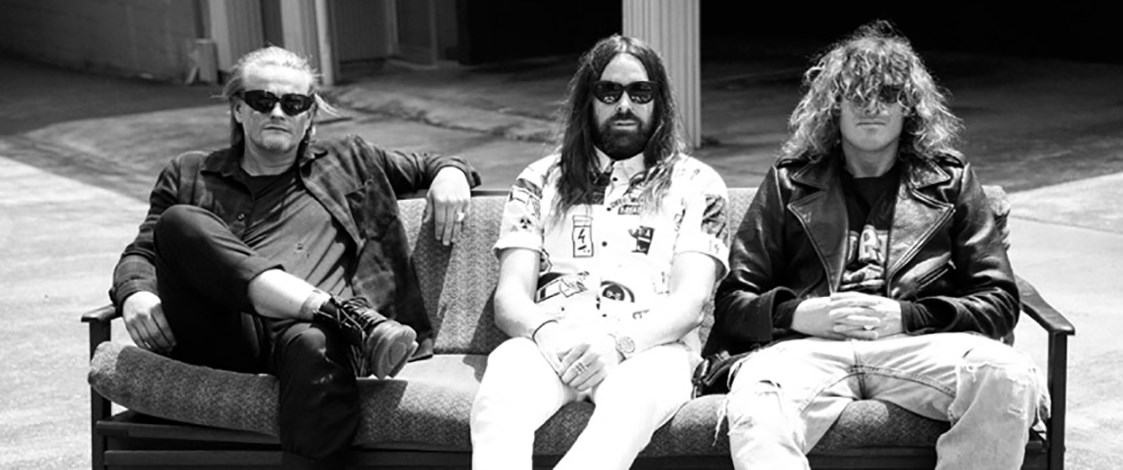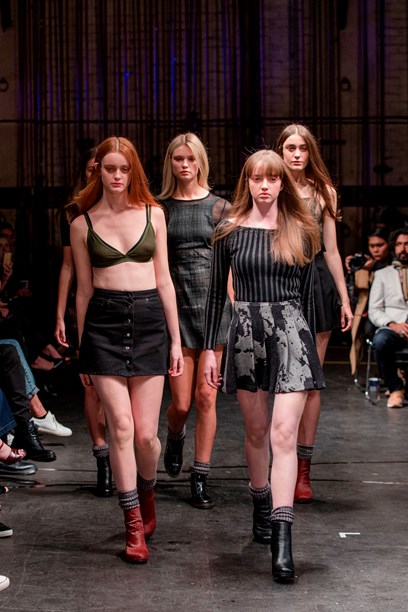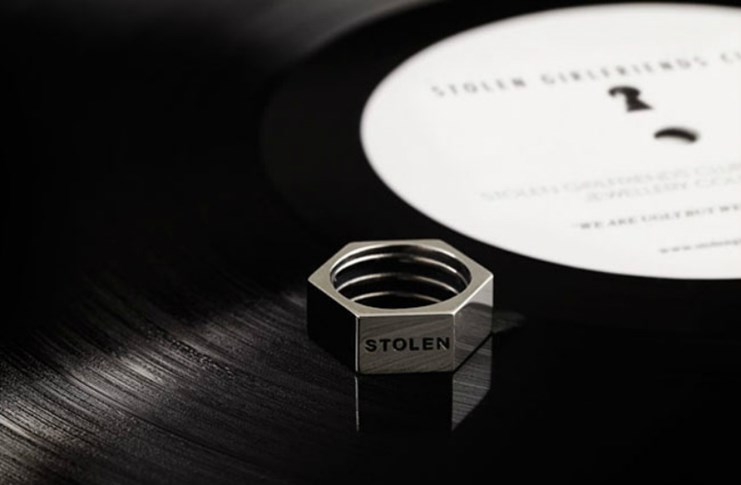Stories
Stolen Girlfriends Club
2005-

A background in surfing and a lack of formal design training may seem an odd starting point for a fashion label, but that’s just where Stolen Girlfriend’s Club co-founders came from when they launched the brand in 2005. Epitomising youthful exuberance and rock 'n' roll nonchalance, the boutique brand was formed out of a desire to create clothes that close friends Dan Gosling, Luke Harwood and Marc Moore couldn’t find anywhere else.
Marc Moore grew up in Raglan, moving from competitive surfing (where he met the other co-founders) into marketing for one of his sponsors. Marc was exploring the creative aspects of painting, and after a successful art show titled 'Stolen Girlfriends Club, supported by Gosling and Harwood', the three decided to print their own designs on t-shirts as what they describe as "a natural visual extension" of the artwork. There was a gap in the market for bold slogans with a punk-rock carelessness that the Stolen brand was eager to fill.
The trio had no design knowledge or technical skill at first, but were nonetheless determined to make their t-shirts from scratch. After much questioning of designer friends, and a few (sometimes costly) mistakes, perseverance paid off and the first Stolen Girlfriend Club’s designs were born. Though Marc viewed their initial designs as a natural extension of their art practices, there were no goals around the future of the brand and their designs. Supported and featured by the likes of Black magazine editor Rachael Churchward and stylist Marina Didovich, demand for the Stolen brand grew quickly, motivating the designers to expand and keep going forward.
Stolen Girlfriend’s Club was launched in a "pigeon-infested" Britomart carpark, 2005, long before Britomart’s resurrection as a fashion hub. The three friends created a "short film about nothing that [was shown to] a big group of people who had no idea what Stolen Girlfriends Club was", intending to let the market decide how the brand should be perceived.
From this very first show, entertaining events have been an intrinsic part of the Stolen experience. "I guess because we do not pride ourselves as purist designers, we like to present our collections in novel ways." Feeling that the wine-and-nibbles style of formal fashion show didn’t fit the personality of the brand, each Stolen Girlfriend’s show or party is intended to entertain and engage, creating a story around the collections being presented. Not much has changed from their industrious beginnings, where the shows were low on budget but big on fun – except now, Marc jokes, their jam-jar glasses hold not beer but champagne.

Stolen Girlfriends Club designers Dan Gosling, Luke Harwood and Marc Moore with stylist Zara Mirkin and models on the runway at New Zealand Fashion Week 2010. Image © Stolen Girlfriends Club.
In 2011, Luke Harwood moved to New York in an effort to bring Stolen Girlfriend’s Club to the international market. Since then, the brand has been stocked in more than 13 countries world-wide, and taken part in a number of high-profile collaborations – including one with shoe-giant Jeffrey Campbell. Stolen Girlfriend’s Club has also been featured in high fashion magazines Vogue UK, Harpers Bazaar UK and Teen Vogue USA, and worn by international celebrities such as singer Florence Welch and Yukimi Nagano of music group Little Dragon.
The irreverent nature of Stolen Girlfriend’s Club is reflected in the off-site locations of many of their shows – not only car-parks, but factories and even a supermarket have been the backdrop for Stolen collections. Once the show is over, however, the clothes have to be available to the market, and here they take a more conventional approach. In addition to the brand’s two Auckland stores (Ponsonby and Newmarket), they have a number of stockists New Zealand-wide, including Smith and Caughey’s and Black Box Boutique. Their strong online presence is in keeping with the social-media driven audience they sell to, and the lack of formal advertising has only ever worked in their favour. 2015 marked the opening of their flagship Newmarket store, in celebration of a Stolen decade.

Stolen Girlfriends Club ten year anniversary collection 'Township Rebellion' on the runway at New Zealand Fashion Week 2015. Image © Stolen Girlfriends Club.
All Stolen pieces were originally made in New Zealand, but as demand grew the team made the decision to move production offshore. Without the fabrics being on hand, utilising them as a starting point in design became difficult. The team now begin the design process entirely with concept: a title, a theme, a mood. Music is the self-confessed lifeblood of the brand, inspiring everything from initial design stages down to the wild after-show parties. The Stolen aesthetic owes a lot to the grunge era, a carefree, confidently disheveled appearance being their trademark look. "While we are pretty obsessed with making products that matter, we are still relaxed and self-aware enough to know that fashion isn't going to save the world."
One of a group of youthful, youth-focused designers formed in the mid-2000s (including labels such as twenty-seven names and RUBY), a decade has given the brand and its founders experience, however they retain a strong connection to their original audience - Stolen fans tend to be devoted, long-time buyers. From their sloganed t-shirt roots, Stolen Girlfriend’s Club has expanded into a range of womenswear, menswear, accessories, a recent denim collection and even a distinctive line of jewellery.

Junk ring from Stolen Girlfriends Club's jewellery range. Image © Stolen Girlfriend's Club.
Stolen Girlfriend’s 2015 'Township Rebellion' collection goes right back to their roots, particularly drawing on Marc’s small-town upbringing. Deep earthy colours link to a distinctively New Zealand countryside setting. The grungy styling – button-up flannel, leather and (fake) sheepskin jackets, bleached skirts and, as ever, slogan tees – summarise the brand’s aesthetic and music obsession perfectly.
Text by Arielle Walker. Banner image © Stolen Girlfriends Club.
Last published March 2016.